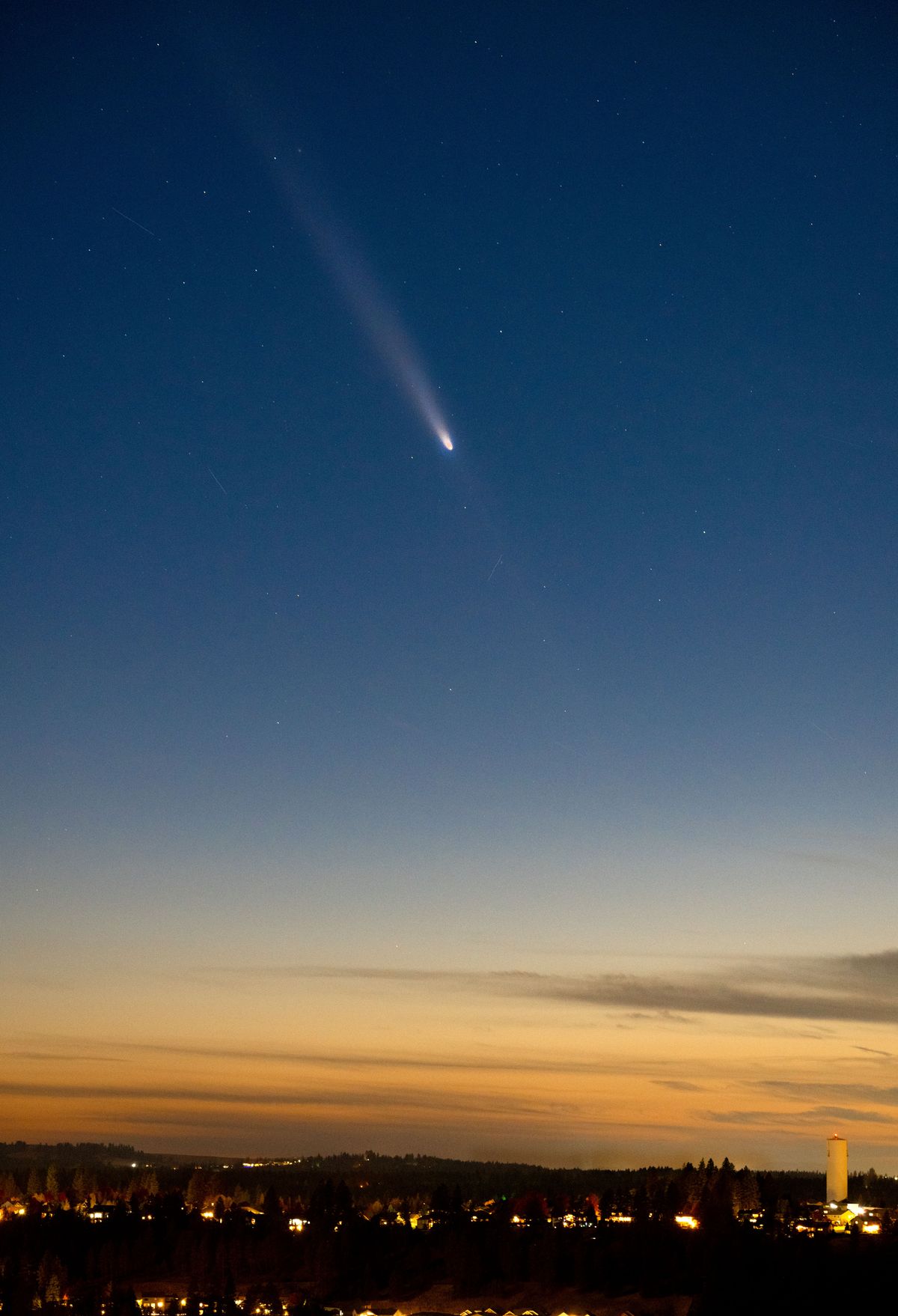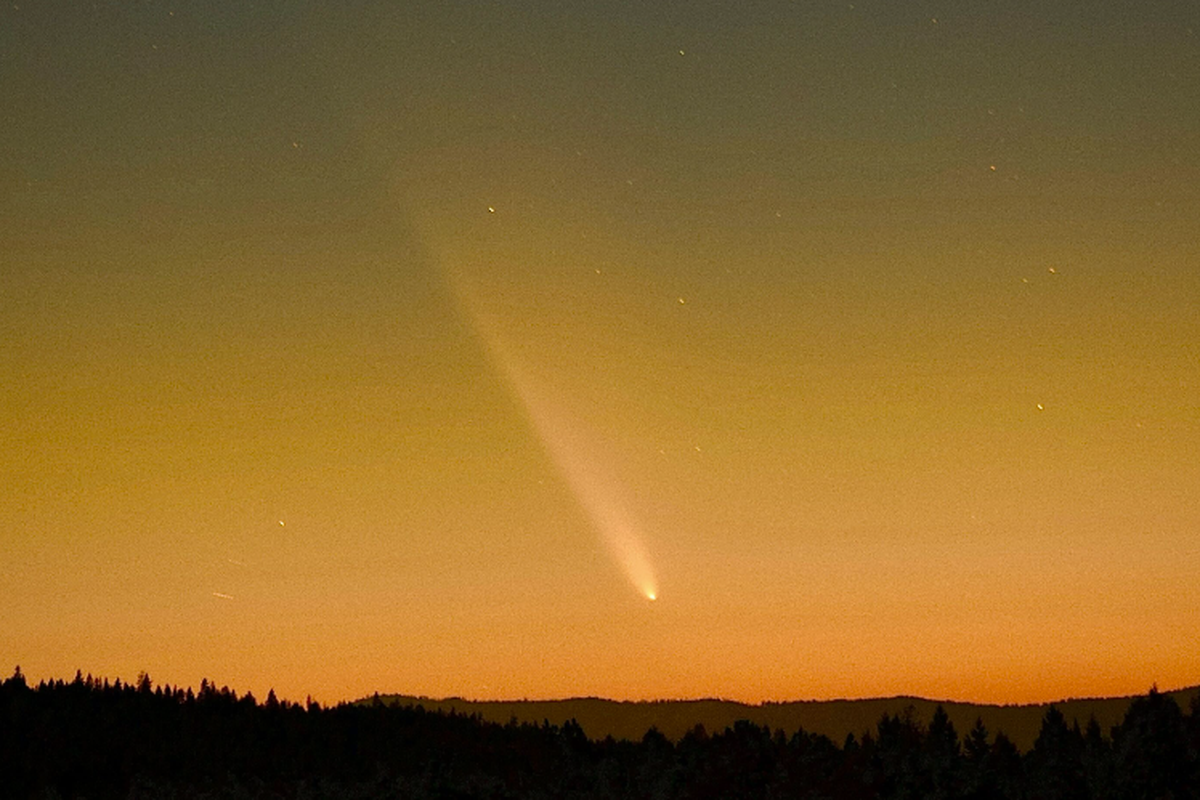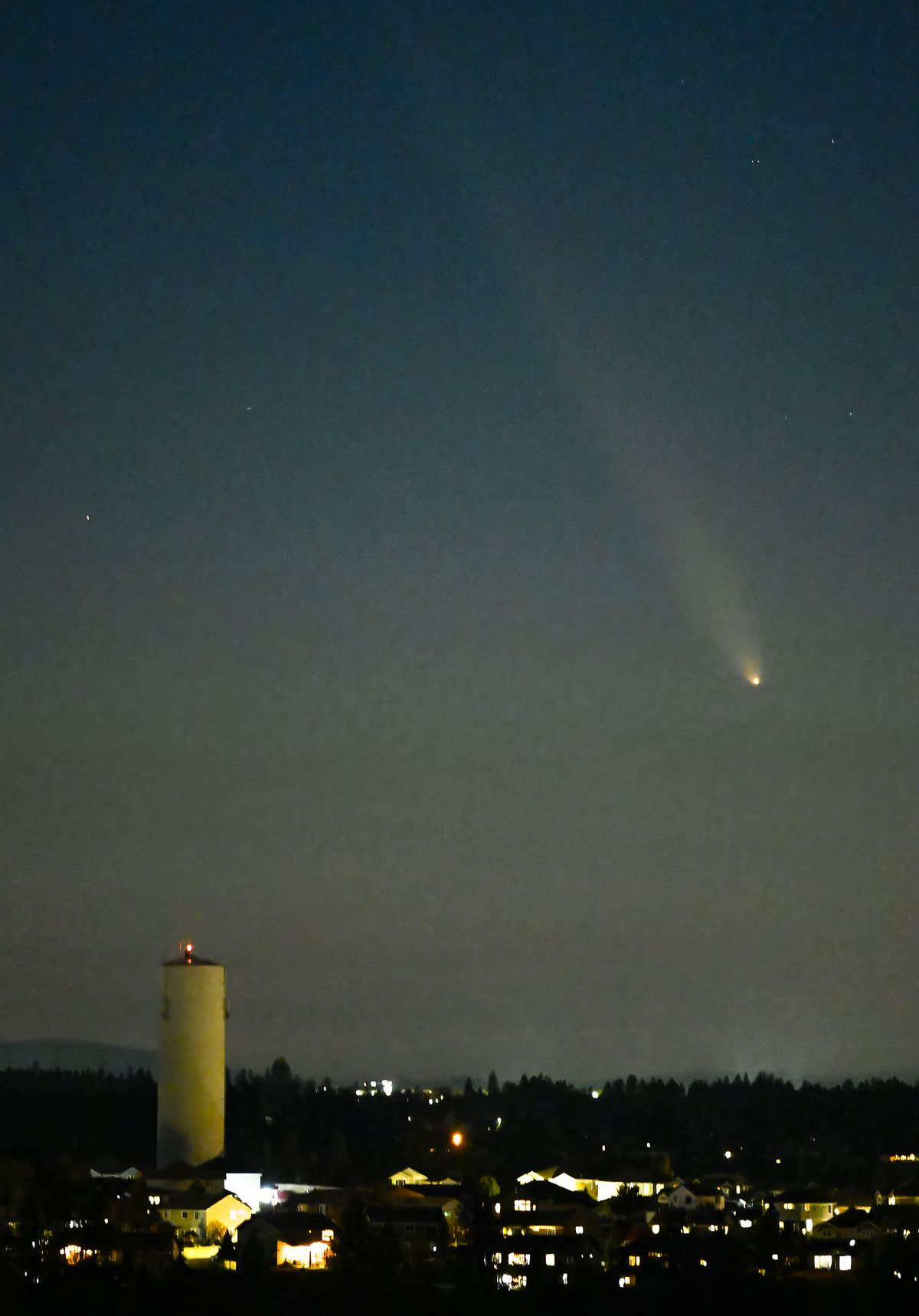Comet appeared again Monday night at sunset
The comet Tsuchinshan-ATLAS revealed itself in the western skies around 7:00 pm yesterday. High clouds may block the view a bit tonight. (National Weather Service-Spokane)
What a month for staring at the night sky.
Last week the northern lights weaved ribbons of green and red through the dark.
This past weekend, and again Monday evening, a comet that last passed by Earth 80,000 years ago appeared to be chasing the setting sun in the western sky.
Dozens of people stood along the South Hill Bluff off High Drive starting at sunset. By 6:59 a long smudge appeared to the north of bright Venus.
It may have been the last night for good comet viewing in the Spokane area.
“It won’t be very cloudy tonight,” said NWS meteorologist Laurie Nisbet on Monday afternoon. She said the skies are poised to change by Tuesday evening.
The comet is called Tsuchinshan-ATLAS. It was discovered last year at the Tsuchinshan (Purple Mountain) Observatory in China and an ATLAS (Asteroid Terrestrial-impact Last Alert System) in South Africa.
According to NASA, the comet raced from the outer edge of the solar system and made its closest run by the sun on Sept. 27. On Saturday it made its closest pass of Earth at about 44 million miles away. An 18-million-mile tail followed the comet.
Nisbett said after Monday night, comet viewing gets tricky.
Tuesday is expected to be cloudy leading to a chance of rain on Wednesday. More rain could fall on Thursday and Friday as a low pressure system moves into the Inland Northwest.
With the change in weather comes a change in temperatures, too.
“Say goodbye to 70s,” she said.



